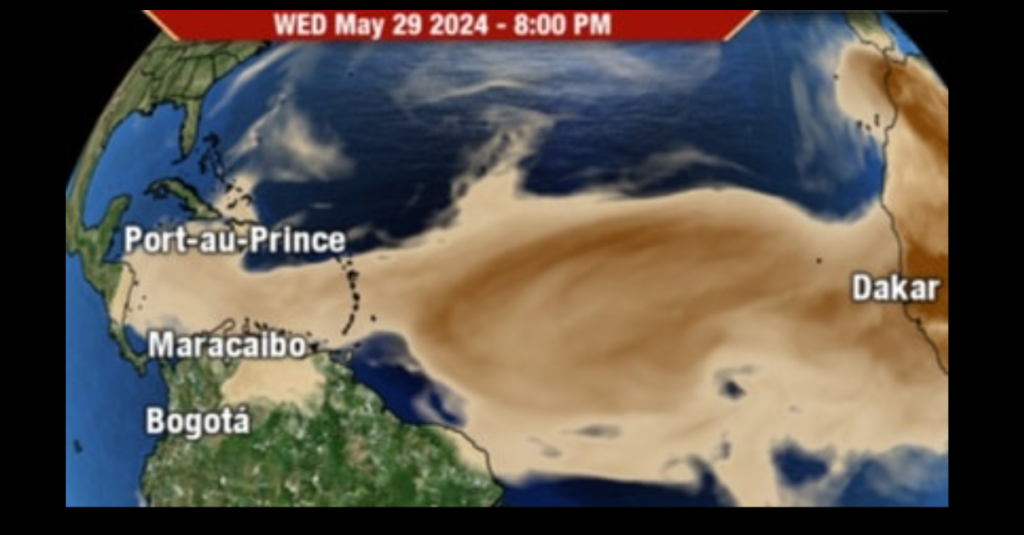SAN JUAN — A dense cloud of Sahara dust is approaching on the way to the Virgin Islands and Puerto Rico. It will occupy our islands for at least three consecutive days, starting from today in the afternoon hours and extending until early Sunday in moderate to high concentrations. The peak day will be tomorrow.
Friday we’ll have also have the second tropical wave of the year moving far south that shouldn’t bring major changes to the scene we’ve seen these days. Then, dry
From now on we will enter the typical pattern of tropical waves followed by dust clouds from the Sahara and so on. This cycle typically extends through mid-August, when waves and hurricanes become more dominant in the Atlantic.
Because Saharan dust includes a type of sand not found in our area, it can trigger your immune system to react with symptoms typical of springtime allergies.
Dr. Rajiv Pandit said that patients can develop nasal congestion, sneezing and post-nasal drip.
For mild symptoms, he recommends saline spray, air purifiers and nasal irrigation. But for those with underlying breathing issues, the risk of more serious symptoms increases, especially patients with a history of asthma or emphysema. Those individuals need to be close to their inhalers.
Dust from the Sahara Desert (the world’s third largest desert located about 5,000 miles away in North Africa), is drifting over our islands again and causing an increase in allergy complaints. Runny nose, scratchy throat, post-nasal drainage. Sneezing. Sometimes congestion, and hot summer temperatures aren’t helping either.
The dust cloud is officially called the Saharan Air Layer. It forms in the late spring or early summer every year due to storms in Africa’s Sahel region bordering the Sahara Desert. And then, it drifts across the Atlantic Ocean into the western hemisphere.
Sunset on St. Croix Wednesday night. (Photo by: Warren Mosler via Facebook)
This particular dust outbreak left the African coast about ten days ago, where it was about the size of the continental United States. It traveled across the tropical Atlantic, through the Caribbean, between Central America and Cuba, and into the Gulf of Mexico. It arrived at our door about ¾ the size of the entire state of Texas. And while this event may seem unusual, these traveling dust clouds have been occurring for hundreds, if not thousands, of years.
The air layers propelling the dust tend to stay about a mile above the Earth’s surface, with strong winds, extremely dry air, and very high temperatures. This phenomenon sometimes suppresses the development of tropical storms and hurricanes. The dust cloud can even encourage toxic algae blooms in the Gulf of Mexico. Over land, the hazy, dust-laden air can prevent storm clouds from developing and increase the potential for hotter days.
While the dust storm doesn’t present any serious threat for most people, Dr. Pandit recommends limiting time outside and keeping hydrated. If over the counter medications don’t work or symptoms get worse, please come in and let Dr. Pandit evaluate your condition.
In the meantime, stay inside in the air conditioning and enjoy one of the actual benefits of the desert dust: beautiful sunsets!

